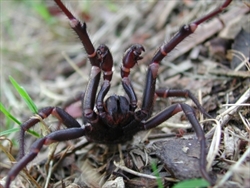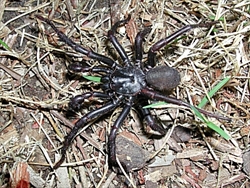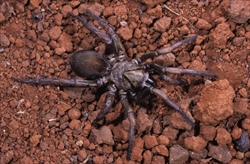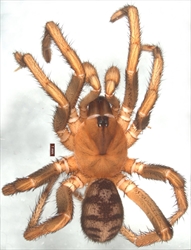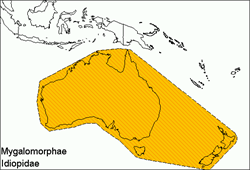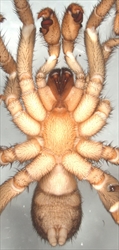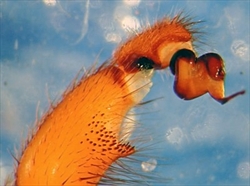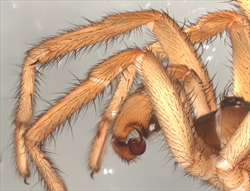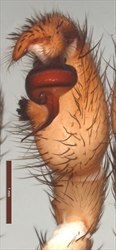Medium to extremely large (4–30mm or more) (Figs 1-7).
Fact Sheet
Idiopidae: Arbanitinae
Northern Territory, Western Australia, Queensland, New South Wales, Victoria, South Australia, Tasmania, Australian Capital Territory, New Zealand, New Guinea (Fig. 8).
Tropical rainforest, temperate rainforest, open eucalyptus forest, semi-arid areas.
Caput of females gently raised, higher than thoracic portion; fovea of females more or less straight, deeply procurved, U-shaped, recurved, T-shaped or M-shaped.
Eyes eight; group tiny, about 0.3 of headwidth; two or three rows; rows equal in width, front row wider, or back row wider.
Chelicerae (Figs 9-10) fangs longitudinal; retromargin with three or more teeth; middle row of teeth distinct; intercheliceral tumescence in male present or absent; rastellum absent or with weak, short or thick spines.
Maxillae (Figs 9-10) longer than wide; anterior lobe small, indistinct; serrula absent; cuspules in female few, clustered at anterior inner corner or for entire length.
Labium (Figs 9-10) wider than long, or about as wide as long; cuspules in female absent or up to 10; in broad group.
Sternum (Figs 9-10) shield-shaped; with three pairs of sigilla.
(Figs 11-14) Cymbium with spines (Fig. 11). Tibial apophysis retroventral.
Arbanitis, Blakistonia, Bungulla, Cantuaria, Cataxia, Cryptoforis, Eucyrtops, Eucanippe, Euoplos, Gaius, Idiosoma.


